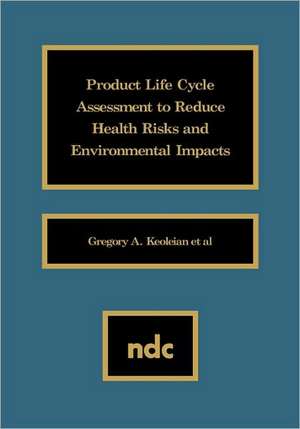Product Life Cycle Assessment to Reduce Health Risks and Environmental Impacts
Autor Gregory A. Keoleianen Limba Engleză Hardback – 30 dec 1994
Preț: 447.10 lei
Preț vechi: 580.65 lei
-23% Nou
Puncte Express: 671
Preț estimativ în valută:
85.56€ • 92.91$ • 71.87£
85.56€ • 92.91$ • 71.87£
Carte tipărită la comandă
Livrare economică 22 aprilie-06 mai
Preluare comenzi: 021 569.72.76
Specificații
ISBN-13: 9780815513544
ISBN-10: 0815513542
Pagini: 299
Dimensiuni: 175 x 245 x 24 mm
Greutate: 0.88 kg
Editura: ELSEVIER SCIENCE
ISBN-10: 0815513542
Pagini: 299
Dimensiuni: 175 x 245 x 24 mm
Greutate: 0.88 kg
Editura: ELSEVIER SCIENCE
Public țintă
Design professionals and all other constituents who have an important role in life cycle design including corporate executives, product managers, production workers, distributors, environmental health and safety staff, purchasers, accountants, marketers, salespersons, legal staff, consumers, and government regulators.Cuprins
Part I: Life Cycle DesignIntroductionLife Cycle Design BasicsThe Development ProcessDesign RequirementsDesign StrategiesEnvironmental Analysis ToolsLife Cycle AccountingAppendix A: Sources of Additional InformationAppendix B: Summary of Major Federal Environmental LawsAppendix C: Overview of Environmental ImpactsAppendix D: Decision Making






